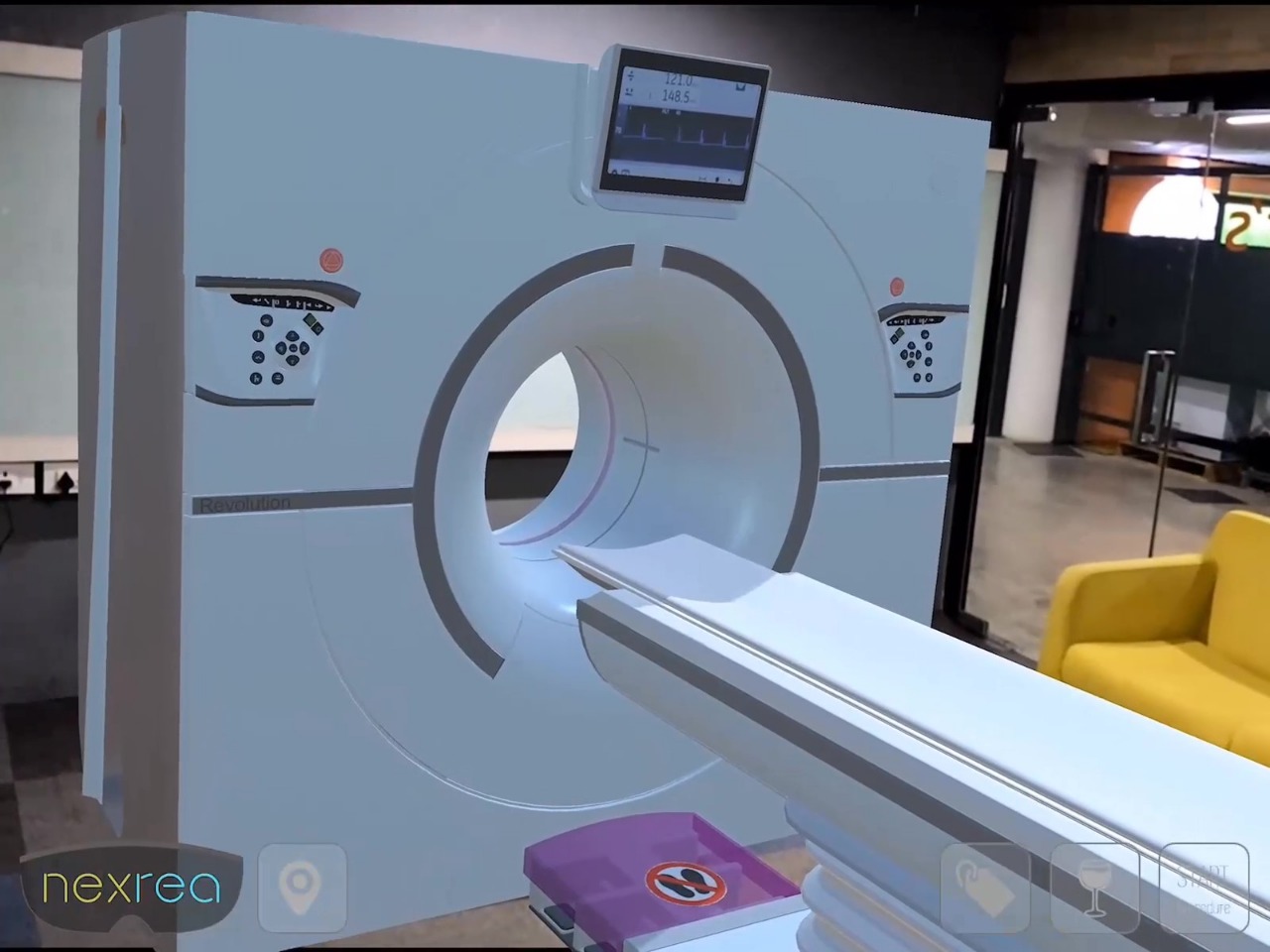Even though Ramya Gujjula is a medical doctor by profession, she has never diagnosed or treated a single patient in her life time.
Instead, along with her younger sister Priyanka, an architect who has worked and experimented on next-gen technologies such as artificial intelligence (AI), augmented reality (AR), and virtual reality (VR), she provides immersive solutions for the production and sale of medical equipment, as well as training programs for its usage.
Although these technologies are largely used in industries like entertainment, gaming, and retail, Ramya says, “There are real and game-changing use cases of such technologies in training, development, and even servicing of medical and automotive equipment.”
In 2014, while working on a project with healthcare company Indegene, Ramya saw up close how the company was using immersive tech to show medical students the insides of a human body in 3D space. Intrigued with the demonstration, she started thinking of other possible applications of the technology in the healthcare space. Between 2015 and ’16, Ramya says, her sister Priyanka was working on personal AR- and VR-related pet projects.
“I had the knowledge of how these technologies work, but the only thing lacking in the industry was the right use case for it [beyond gaming and entertainment],” says Priyanka.
Once the Gujjula sisters figured out their sales pitch to healthcare companies, Priyanka, who was then working in Australia as a sales and marketing executive in an architecture firm, returned to India and founded NexRea with her sister in 2017.
They decided to capitalize on their strengths—Priyanka used her knowledge of technology and architecture to virtually design or map machines, and Ramya tapped her network and experience of working with healthcare companies to find out about problems they might need help with.
“Since I have a medical background and have worked with healthcare companies, I sort of knew how we could partner with them,” Ramya says.
Even with her knowledge of the healthcare equipment industry, she couldn’t convince companies to use their service. Ramya says, “The use case of AI, AR, and VR technology was pretty new to the medical device companies. We would meet with a lot of companies but the conversion rate was pretty low.” They were continuously turned away in part because of their gender. “We realized only if we talk to a woman from the company who understands the value of what we are trying to do, she might push the product internally,” Ramya says.

By the end of 2017, once they were able to convince GE Healthcare to become a client, the NexRea developed sufficient credibility and were able to bring on board other big names, like Johnson & Johnson, Medtronic, Sysmex Corporation, Tech Mahindra, and Horiba Medical.
Priyanka says the company has made products and services that cover the entire life-cycles of medical devices—from research and development, to sales, and finally when they need repairs. When working on a project, NexRea’s team creates a 3D version of a piece of equipment and places it in virtual space. This can be used for demonstrating how the machine works, training new technicians, or other relevant purposes. “We provide an immersive experience of the machine without having anyone to use the actual product,” Ramya says.
During the R&D phase of developing a new machine, manufacturers can utilize NexRea’s AR capabilities to rapidly create multiple design iterations. When the model is ready to be sent to the market, NexRea’s tools can enable the sales and marketing team in their pitches to hospitals, doctors, and diagnostic labs. “Using our mobile app, the sales team can project the life-size replica of the equipment and can give an actual demo to the clients,” Ramya says. “Since companies have realized its value, we don’t find it difficult to sell the product anymore.”
For the end users of the medical equipment, which are typically hospitals, lab technicians, and clinics, NexRea’s tools come in handy when training medical practitioners to use the equipment, and if there are any technical snags, a representative from NexRea can offer troubleshooting remotely.
The duo tailors solutions for each product they work on. For example, to be able to telecast the 3D image of a machine for the sales pitch, NexRea has to map the machine, understand its internal intricacies, and know how it can be repaired if it goes caput.
Priyanka says the way they mix and match different pieces of tech for each problem is what sets them apart from competition such as Mobiliya and US-based Infinity AR. NexRea doesn’t create new technology, but customizes solutions by applying what already exists. “We are not a technology company, we are solution providers. We first understand the problem and then accordingly use the apt technology to come up with a solution,” she says. “Our work method is to send a team, conduct a study, analyze the machines, and study the report. It gives us a clue to the problem.”
As of now, NexRea’s customers are limited to healthcare sector, but Ramya is seeking new clients in other industries as well—automobiles, heavy machinery, as well as oil and gas. “We have worked a bit in the automobile industry, but focus has always been on healthcare clients because we wanted to be committed to one sector before jumping to another. Now that we know our tech works, its application can easily be expanded to other industries as well,” Ramya says.
This article is part of “Women in Tech,” a series by KrASIA that highlights the achievements of women who are a driving force behind South and Southeast Asia’s tech startups.
